Subtotal: £13.55
Veiltail Nemo Betta Male Randomly Selected Betta Splendens Labyrinth Fish, Active Swimmer and Colorful Addition to Your Aquarium, Ideal for Beginners and Breeding
£27.49 Original price was: £27.49.£23.22Current price is: £23.22.
Welcome this stunning Veiltail Nemo Betta Male into your aquarium. With vibrant colors and flowing fins, this Betta splendens adds elegance to any tank. Perfect for those seeking beautiful inhabitants, these active swimmers thrive with proper care and a peaceful environment.
1001 in stock
Species Introduction
The Veiltail Nemo Betta, scientifically known as Betta splendens, is a captivating species belonging to the family Osphronemidae. Originating from the lush freshwater habitats of Southeast Asia, particularly in Thailand, Cambodia, and Vietnam, these fish thrive in shallow waters, rice paddies, and slow-moving streams. Their natural habitat is characterized by dense vegetation and floating plants that provide shelter and breeding grounds. The Veiltail Nemo Betta is a stunning variant of the Betta splendens, known for its vibrant colors and flowing fins that resemble a veil, making it a favorite among aquarists. As a labyrinth fish, it possesses a unique adaptation that allows it to breathe atmospheric oxygen, which is crucial for its survival in low-oxygen environments. This remarkable ability, combined with their striking appearance, makes them a popular choice for both novice and experienced fish keepers.
Care Requirements Dashboard
✓ Care Level: Easy
Tank Size: Minimum 5 gallons
Water Temperature: 76°F – 82°F (24°C – 28°C)
pH Level: 6.5 – 7.5
Hardness: 5 – 20 dGH
Natural Behavior & Temperament
Veiltail Nemo Bettas are known for their vibrant personalities and active swimming patterns. They are generally peaceful fish, but males can exhibit territorial behavior, especially when they feel their space is being encroached upon. This behavior is particularly pronounced during breeding periods or when they are introduced to new tank mates. Bettas are also known for their curious nature, often exploring their surroundings and interacting with their environment. They enjoy having hiding spots and decorations in their tank, which help reduce stress and provide a sense of security. Despite their territorial tendencies, they can coexist with certain species, making them suitable for community tanks if carefully selected. Understanding their natural behavior is essential for creating a harmonious aquarium environment.
Tank Setup Guide
Creating an ideal environment for your Veiltail Nemo Betta involves careful consideration of tank size, substrate, and decorations. A minimum tank size of 5 gallons is recommended to provide ample swimming space and reduce territorial disputes. The substrate should be soft and smooth, such as sand or fine gravel, to prevent injury to their delicate fins. When it comes to decorations, incorporating live plants, caves, and driftwood can enhance their habitat and create hiding spots that mimic their natural environment. Bettas thrive in well-planted tanks, as plants not only provide shelter but also contribute to water quality by absorbing nitrates. Additionally, ensure that the tank is equipped with a gentle filter to maintain water quality without creating strong currents, which can stress your fish. Lighting should be moderate, as excessive brightness can cause discomfort. Regular maintenance, including water changes and cleaning, is crucial to keeping your Betta healthy and happy.
Water Quality Management
Maintaining optimal water quality is essential for the health and well-being of your Veiltail Nemo Betta. The ideal water temperature for these tropical fish ranges from 76°F to 82°F (24°C to 28°C), with a stable environment being critical. Sudden fluctuations in temperature can lead to stress and health issues. The pH level should be maintained between 6.5 and 7.5, providing a slightly acidic to neutral environment that mirrors their natural habitat. Regular testing of water parameters is recommended to ensure they remain within these ideal ranges. Additionally, the hardness of the water should be kept between 5 and 20 dGH, as this range supports the overall health of your Betta. Utilizing a quality water conditioner is advisable to remove harmful chemicals and chlorine from tap water before introducing it to the tank. Regular water changes, approximately 25% weekly, will help maintain water quality and prevent the buildup of toxins.
Feeding & Nutrition
Feeding your Veiltail Nemo Betta a balanced diet is crucial for their health and vibrant coloration. Bettas are carnivorous and thrive on high-quality betta pellets that are specifically formulated to meet their dietary needs. A varied diet should include high-protein foods such as freeze-dried or frozen bloodworms, brine shrimp, and daphnia. It is important to feed them small amounts two to three times a day, ensuring that they consume the food within a few minutes to prevent overfeeding and water quality issues. A feeding schedule is essential to maintain their health and prevent obesity. Additionally, it is beneficial to occasionally provide live foods, as they stimulate natural hunting instincts and provide enrichment. Always monitor their feeding habits and adjust portions accordingly, as individual fish may have different appetites. Proper nutrition not only supports their physical health but also enhances their vibrant colors, making them a stunning display in your aquarium.
Compatibility Guide
✓ Peaceful Fish
Compatible Tank Mates: Neon Tetras, Corydoras Catfish, Guppies
Avoid: Other Male Bettas, Aggressive Species
When considering tank mates for your Veiltail Nemo Betta, it is essential to choose peaceful species that will not provoke aggression. Suitable companions include small schooling fish like Neon Tetras and Corydoras Catfish, which tend to occupy different areas of the tank and do not pose a threat to your Betta. Guppies can also be compatible, but caution should be taken as their vibrant colors may attract unwanted attention from male Bettas. It is crucial to avoid housing multiple male Bettas together, as they are highly territorial and will likely fight, leading to stress and injury. Additionally, aggressive species such as Cichlids or larger fish may intimidate or harm your Betta. Always monitor interactions in the tank and be prepared to separate fish if any signs of aggression arise.
Health & Wellness
Maintaining the health and wellness of your Veiltail Nemo Betta involves regular observation and proactive care. Common health issues that Bettas may face include fin rot, ich, and velvet disease. Fin rot is often caused by poor water quality or injury, leading to frayed fins. Regular water changes and maintaining a clean environment are key to preventing this condition. Ich, a parasitic infection, presents as white spots on the fish’s body and fins, indicating a need for treatment with appropriate medication. Velvet disease, characterized by a gold dust appearance, also requires prompt attention. Signs of a healthy Betta include vibrant colors, active swimming, and a good appetite. Regularly check for any changes in behavior, such as lethargy or loss of appetite, which may indicate underlying health issues. Providing a stress-free environment, maintaining water quality, and ensuring a balanced diet are crucial components in promoting the overall health of your Betta.
Breeding Information
Breeding Veiltail Nemo Bettas can be a rewarding yet challenging experience. To successfully breed Bettas, it is essential to create a separate breeding tank with a capacity of at least 10 gallons, providing ample space for the male and female to interact. The breeding process begins with the male building a bubble nest at the water’s surface, which serves as a safe haven for the eggs. The female is introduced to the male, and if they are compatible, courtship behavior will ensue, characterized by the male displaying his fins and colors. Once the female is ready, she will release her eggs, which the male will fertilize and collect in the bubble nest. After spawning, it is crucial to remove the female to prevent aggression from the male. The eggs typically hatch within 24 to 48 hours, and the fry will remain in the nest until they are free-swimming. At this stage, it is important to provide infusoria or finely crushed food to support their growth. Monitoring water quality and maintaining a stable environment during this period is vital for the survival of the fry.
Acclimation Process
Acclimating your new Veiltail Nemo Betta to its new environment is a critical step in ensuring a smooth transition and minimizing stress. Upon bringing your Betta home, it is essential to float the sealed bag containing the fish in the aquarium for approximately 15 to 20 minutes. This allows the temperature in the bag to gradually equalize with that of the tank. After this initial acclimation period, you should slowly introduce small amounts of tank water into the bag every 5 minutes, allowing the Betta to adjust to the new water parameters. This process should continue for about an hour. Once the acclimation is complete, gently release the Betta into the tank using a net to avoid introducing any transport water that may contain harmful substances. Avoid placing the Betta directly into the tank from the bag, as this can shock the fish. Proper acclimation is vital for reducing stress and promoting a healthy start in its new home.
Long-term Care
The long-term care of your Veiltail Nemo Betta involves understanding its lifecycle and growth expectations. Bettas typically have a lifespan of 3 to 5 years, depending on their care and environmental conditions. As they mature, they will reach a maximum length of about 7 cm. Regular health checks, including monitoring for signs of illness and ensuring a balanced diet, will contribute to a longer, healthier life. It is also important to keep their environment clean and stress-free, as stress can significantly impact their health. Regular water changes, tank maintenance, and monitoring water parameters will help maintain a stable environment. Additionally, providing enrichment through decorations and plants will enhance their quality of life. As your Betta ages, it may require adjustments in care, such as dietary changes or more frequent health monitoring. Understanding their needs and being proactive in their care will ensure that your Betta thrives throughout its life.
Natural Habitat Recreation
Recreating the natural habitat of your Veiltail Nemo Betta is essential for their well-being and happiness. In the wild, these fish inhabit shallow waters with dense vegetation, providing hiding spots and breeding grounds. To mimic this environment, consider incorporating live plants such as Java fern, Anubias, and floating plants like duckweed into your aquarium. These plants not only enhance the aesthetic appeal of the tank but also contribute to water quality by absorbing nitrates and providing oxygen. Additionally, adding driftwood and rocks can create natural hiding spots and territories, which are important for reducing stress and promoting natural behaviors. The use of soft, natural substrates will further enhance the recreation of their habitat. Creating a biotope that reflects their natural environment will not only benefit your Betta but also create a visually stunning display in your aquarium.
Seasonal Care Adjustments
As seasons change, so too may the care requirements for your Veiltail Nemo Betta. During the warmer months, it is essential to monitor the water temperature closely, as higher ambient temperatures can lead to overheating in smaller tanks. Ensure that the water temperature remains within the ideal range of 76°F to 82°F (24°C to 28°C). In contrast, during the colder months, additional heating may be necessary to maintain a stable temperature, as sudden drops can stress your Betta. It is also important to adjust lighting according to seasonal changes, as longer daylight hours can promote plant growth but may also lead to algae blooms. Regularly check water parameters and be prepared to make adjustments as needed. Seasonal care adjustments are vital for ensuring the health and well-being of your Betta throughout the year.
Expert Tips
For those looking to provide the best care for their Veiltail Nemo Betta, consider these expert tips. First, invest in a quality water testing kit to regularly monitor water parameters, as maintaining stable conditions is crucial for your Betta’s health. Second, consider using a sponge filter to provide gentle filtration without creating strong currents, which can stress your fish. Additionally, be mindful of the tank’s lighting; providing a day/night cycle will help regulate their natural behaviors. When introducing new tank mates, always do so gradually and observe interactions closely to prevent aggression. Lastly, consider keeping a journal to track your Betta’s feeding, health, and behavior changes over time. This practice will help you identify any issues early and adjust care as needed, ensuring a long, healthy life for your aquatic companion.
Troubleshooting
Despite your best efforts, you may encounter challenges while caring for your Veiltail Nemo Betta. Common issues include fin rot, stress, and poor water quality. If you notice frayed fins or discoloration, check water parameters immediately and perform a partial water change if necessary. Stress can manifest as lethargy or hiding; ensure that your Betta has adequate hiding spots and that tank mates are compatible. If your Betta is not eating, consider adjusting their diet or checking for signs of illness. Regular observation and prompt action are key to resolving issues before they escalate. If health problems persist, consult with an aquarium professional or veterinarian specializing in fish care for guidance. Remember, proactive care and attention to detail are essential for maintaining a healthy aquarium environment.
Scientific Background
The scientific classification of the Veiltail Nemo Betta places it within the family Osphronemidae, which includes various species of labyrinth fish. The Betta splendens is particularly well-studied due to its popularity in the aquarium trade and its unique breeding behaviors. Research indicates that Bettas exhibit complex social structures and communication methods, utilizing color changes and fin displays to convey their mood and intentions. Conservation efforts are crucial for preserving wild populations, as habitat destruction and over-collection pose significant threats. Understanding the scientific background of your Betta can enhance your appreciation for these remarkable fish and inform your care practices.
Advanced Care Techniques
For experienced aquarists looking to elevate their care for Veiltail Nemo Bettas, consider implementing advanced techniques. One approach is to establish a breeding program, focusing on selective breeding to enhance desirable traits such as color and fin structure. Creating a species-specific biotope can also provide an enriching environment, allowing Bettas to exhibit natural behaviors. Additionally, utilizing live foods and incorporating varied diets can significantly improve their health and coloration. Advanced water quality management techniques, such as utilizing a planted tank with a natural filtration system, can enhance the overall ecosystem of your aquarium. Engaging in ongoing education about Betta care and staying informed about the latest research will enable you to provide the best possible environment for your aquatic friends. By embracing these advanced care techniques, you can ensure that your Veiltail Nemo Betta thrives and remains a vibrant addition to your aquarium.
Water Quality Parameters
Optimal Range
24-27°C
6.5-7.5
0 ppm
Caution Zone
22-24°C or 27-29°C
6.0-6.5 or 7.5-8.0
0.25-0.5 ppm
Danger Zone
<22°C or >29°C
<6.0 or >8.0
>0.5 ppm
Monitoring Tip: Test water parameters weekly and perform regular water changes to maintain optimal conditions for your aquatic friends!
Frequently Asked Questions
Q: What tank size is required for a Veiltail Nemo Betta?
For a Veiltail Nemo Betta, a minimum tank size of 19 litres (5 gallons) is recommended. This provides ample space for swimming and reduces stress. Bettas are territorial and can become aggressive if confined to a small space. A larger tank also allows for better water quality management, which is crucial for their health. Ensure the tank is well-filtered and heated, maintaining a stable temperature between 24-28°C (75-82°F). Adding live plants and decorations can enhance their environment, offering hiding spots and reducing stress levels. Regular water changes, ideally 25% weekly, are essential for maintaining optimal conditions.
✓ Expert Tip
Consider cycling your tank before introducing your Betta to ensure a stable environment.
Q: What water parameters do Veiltail Nemo Bettas require?
Veiltail Nemo Bettas thrive in water with a pH level between 6.5 and 7.5, ideally around 7.0. The hardness should be in the range of 5-20 dGH. Maintaining a stable temperature between 24-28°C (75-82°F) is essential for their well-being. Regular testing of water parameters is recommended, as Betta fish are sensitive to fluctuations. Ammonia and nitrite levels should be kept at 0 ppm, while nitrate levels should be under 20 ppm. Using a good quality water conditioner can help remove harmful substances from tap water.
✓ Expert Tip
Invest in a reliable water testing kit to monitor your Betta’s environment accurately.
Q: How often should I feed my Veiltail Nemo Betta?
Feed your Veiltail Nemo Betta two to three times a day, but only provide what they can consume within 2-3 minutes. Overfeeding can lead to health issues such as obesity and water quality problems. A varied diet consisting of high-quality pellets, frozen or freeze-dried foods like bloodworms and brine shrimp is ideal. This not only ensures proper nutrition but also keeps your Betta active and healthy. Always remove any uneaten food to maintain water quality. Adjust feeding frequency based on your Betta’s activity level and condition.
✓ Expert Tip
Consider using a feeding schedule to ensure consistency and monitor your Betta’s response to different foods.
Q: What are the best tank mates for Veiltail Nemo Bettas?
When selecting tank mates for your Veiltail Nemo Betta, consider peaceful species that won’t provoke aggression. Suitable companions include Corydoras catfish, neon tetras, and guppies. Avoid fin-nippers like certain barbs and any fish with long, flowing fins that may resemble a rival Betta. Ensure that the tank is spacious enough to provide territories, reducing potential conflicts. Introduce new fish gradually and monitor for signs of stress or aggression. Ideally, each fish should have enough space to establish its own territory.
✓ Expert Tip
Always have a backup plan, such as a separate tank, should aggression occur.
Q: How do I properly acclimatise my Veiltail Nemo Betta to my aquarium?
Acclimatising your Veiltail Nemo Betta is crucial for their health. Begin by floating the sealed bag in your aquarium for around 15-20 minutes to equalise the temperature. After that, gradually introduce aquarium water into the bag, about a quarter cup every 5-10 minutes. Continue this process for about an hour, allowing the Betta to adjust to the new water parameters. Once acclimatised, gently transfer them into the tank using a net to avoid adding any transport water, which may contain harmful substances. This slow process helps minimise stress and promotes a healthy transition.
✓ Expert Tip
Always acclimatise in a dimly lit area to reduce stress during the transition.
Q: What are the signs of a healthy Veiltail Nemo Betta?
A healthy Veiltail Nemo Betta displays vibrant colours, clear eyes, and smooth, unblemished fins. They should be active, swimming around their tank and showing curiosity towards their surroundings. Healthy Bettas will exhibit normal behaviour, such as flaring their fins when observing their reflection. Look out for signs of stress or illness, such as lethargy, loss of colour, or clamped fins. Regular monitoring of their eating habits is also essential; a healthy Betta will eagerly accept food. Maintaining optimal water conditions plays a significant role in their overall health.
✓ Expert Tip
Keep a journal of your Betta’s behaviour and health changes to easily spot any issues.
Q: How do I successfully breed Veiltail Nemo Bettas?
Breeding Veiltail Nemo Bettas requires careful preparation. Begin by conditioning the pair with a nutritious diet rich in protein, such as live or frozen foods. Set up a breeding tank with a gentle filter and plenty of hiding spots. The water temperature should be slightly higher, around 28-30°C (82-86°F). Introduce the female to the male’s territory, and observe their behaviour. If the male displays a bubble nest and both fish show interest, they may mate. After spawning, remove the female to prevent aggression. The male will care for the eggs until they hatch, which typically occurs within 24-48 hours.
✓ Expert Tip
Be patient and monitor the breeding process closely to ensure a successful outcome.
Q: What temperature should I maintain for my Veiltail Nemo Betta?
The ideal temperature for a Veiltail Nemo Betta is between 24-28°C (75-82°F). Maintaining a stable temperature within this range is crucial as Bettas are tropical fish and can become stressed if temperatures fluctuate significantly. A reliable aquarium heater is recommended to achieve and maintain the desired temperature. Regularly check the temperature with a thermometer, as sudden changes can lead to health issues. During colder months, ensure that the heater is functioning properly, and consider insulating the tank to prevent heat loss.
✓ Expert Tip
Avoid placing the tank near drafts or direct sunlight to maintain a consistent temperature.
Q: How long do Veiltail Nemo Bettas typically live in captivity?
With proper care, Veiltail Nemo Bettas can live for 3 to 5 years in captivity. Factors such as water quality, diet, and tank conditions significantly influence their lifespan. Providing a spacious and clean environment, along with regular maintenance, will promote their longevity. Additionally, monitoring for signs of stress or illness and addressing any issues promptly will help ensure a healthy life. A balanced diet rich in nutrients is also vital for their overall well-being. Establishing a routine for feeding, water changes, and tank checks will contribute to a thriving Betta.
✓ Expert Tip
Keep a close eye on your Betta’s health to ensure they live a full, vibrant life.
Q: What type of substrate is most suitable for Veiltail Nemo Bettas?
For Veiltail Nemo Bettas, a soft substrate such as fine gravel or sand is recommended. This type of substrate is gentle on their delicate fins and allows for easy cleaning. Avoid sharp or coarse materials that could injure their fins or skin. Additionally, a natural substrate can help maintain beneficial bacteria that contribute to a healthy ecosystem in the tank. When arranging the substrate, consider creating slopes or layers to enhance the visual appeal and provide hiding spots for your Betta. Regularly clean the substrate to prevent waste accumulation, which can affect water quality.
✓ Expert Tip
Consider planting live plants in your substrate to enhance the aesthetic and provide additional cover.
Q: What behavioural patterns should I expect from my Veiltail Nemo Betta?
Veiltail Nemo Bettas are known for their vibrant personalities. They are often curious and will explore their surroundings, swimming actively and interacting with decorations and plants in the tank. Bettas can exhibit territorial behaviour, especially towards other males or fish with similar fin structures. They may flare their fins when feeling threatened or during mating displays. Bettas are also known to recognise their caretakers and may respond when approached. Providing a stimulating environment with hiding spots and varied decorations can encourage natural behaviours and reduce stress.
✓ Expert Tip
Spend time observing your Betta’s behaviour to understand their personality and preferences.
Q: How can I prevent common diseases in Veiltail Nemo Bettas?
Preventing diseases in Veiltail Nemo Bettas involves maintaining optimal water quality and a stress-free environment. Regular water changes, ideally weekly, can help prevent the buildup of harmful toxins. Ensure that the tank is well-filtered and heated to the appropriate temperature. Quarantine new fish before introducing them to your Betta’s tank to avoid introducing pathogens. A balanced diet rich in nutrients strengthens their immune system. Monitor your Betta for signs of illness, such as changes in appetite, behaviour, or appearance, and address any issues promptly to prevent escalation.
✓ Expert Tip
Keep a close eye on water parameters; fluctuations can lead to stress and disease.
Q: What lighting conditions do Veiltail Nemo Bettas prefer?
Veiltail Nemo Bettas thrive under moderate lighting conditions. They appreciate a dimly lit environment that mimics their natural habitat, which is often shaded by plants and structures. LED lights are suitable as they can be adjusted for brightness. Avoid harsh, bright lighting as it can stress your Betta. Providing areas of shade through plants or decorations can help them feel secure. A consistent day/night cycle of about 10-12 hours of light is ideal, promoting a healthy rhythm and reducing stress.
✓ Expert Tip
Use a timer to maintain a consistent lighting schedule, helping to regulate your Betta’s day/night cycle.
Q: How do I recognise stress in my Veiltail Nemo Betta?
Recognising stress in your Veiltail Nemo Betta is crucial for their health. Common signs of stress include hiding, lethargy, and a lack of appetite. Bettas may also exhibit clamped fins, a darkening of colour, or excessive flaring of their fins. If they are darting around the tank or rubbing against objects, this may indicate discomfort or irritation. Sudden changes in behaviour, such as aggression towards tank mates, can also signify stress. Regular monitoring of their environment and behaviour will help you identify any issues early, allowing for prompt corrective action.
✓ Expert Tip
Maintain a peaceful environment and avoid sudden changes to help reduce stress levels.
Q: What natural habitat conditions should I replicate for Veiltail Nemo Bettas?
To replicate the natural habitat of Veiltail Nemo Bettas, create a warm, shallow environment with plenty of hiding spots. In the wild, they inhabit slow-moving waters with dense vegetation. Incorporate live plants, such as Java fern or Anubias, and provide decorations that mimic natural structures. Maintain a slightly acidic to neutral pH and ensure the water is clean and well-filtered. Soft substrate can mimic the riverbeds they are accustomed to. Regularly monitor water parameters and provide a stable temperature to foster a healthy environment.
✓ Expert Tip
Consider using driftwood or rocks to create an engaging landscape that simulates their natural habitat.


 Assorted Colour Vampire Crab Geosesarma Sp 2-3Cm
Assorted Colour Vampire Crab Geosesarma Sp 2-3Cm 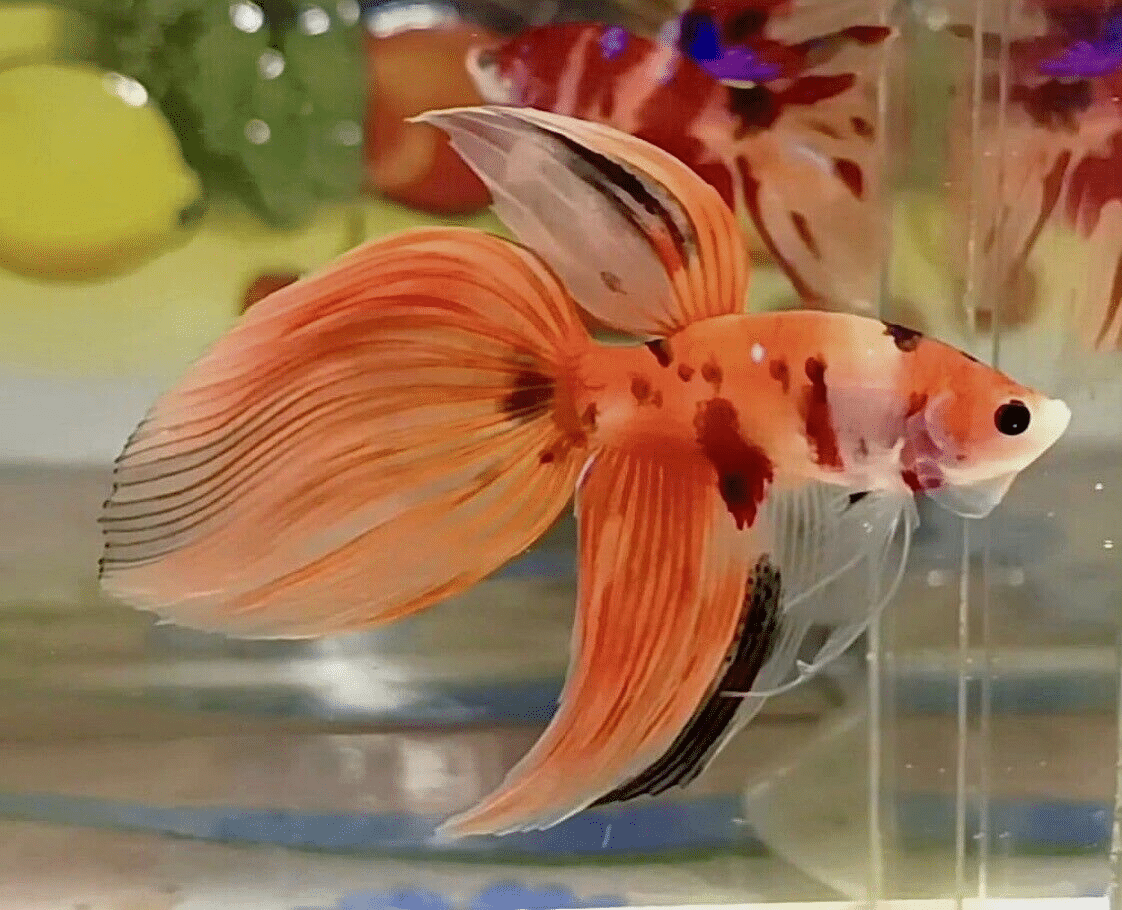


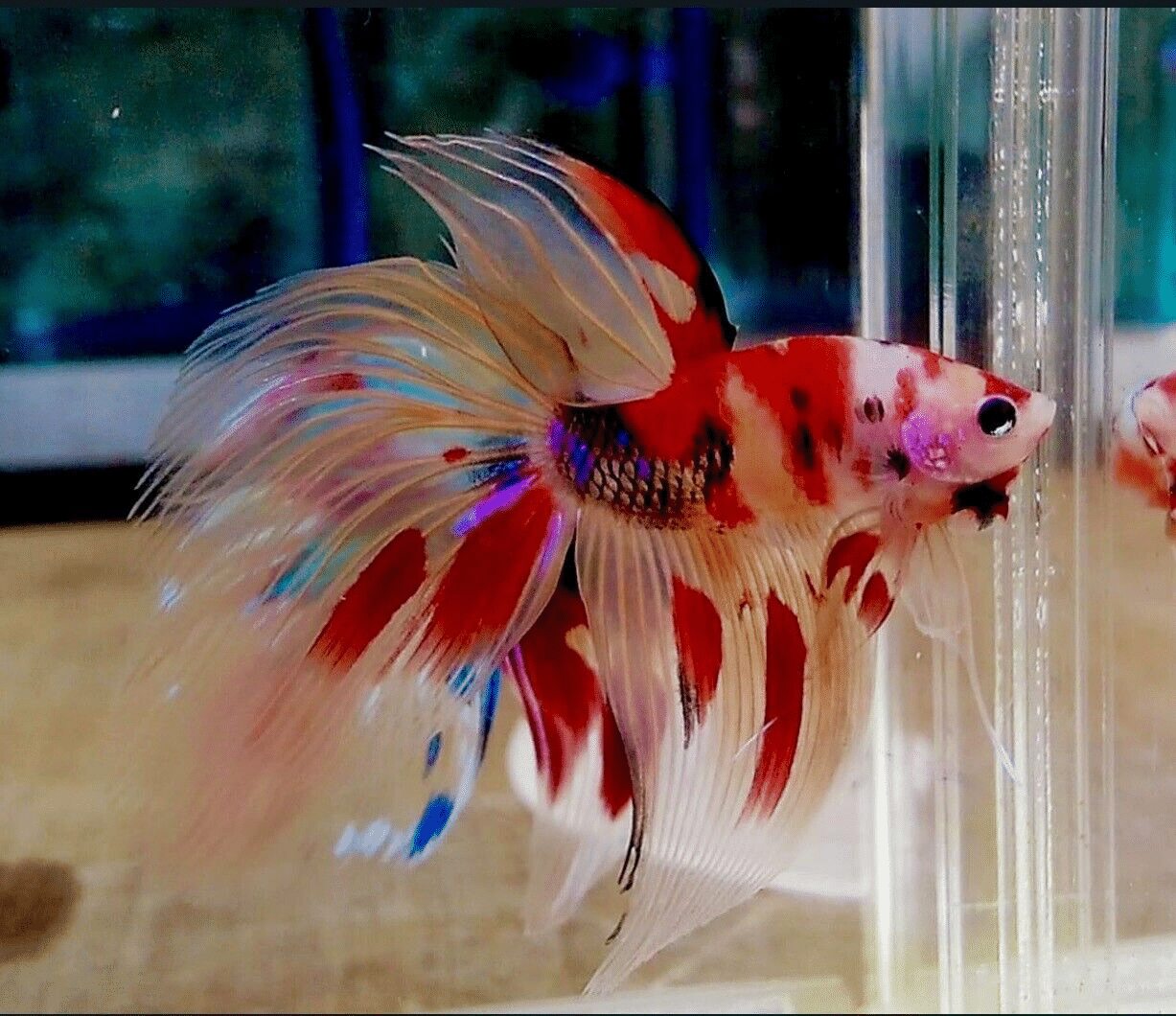
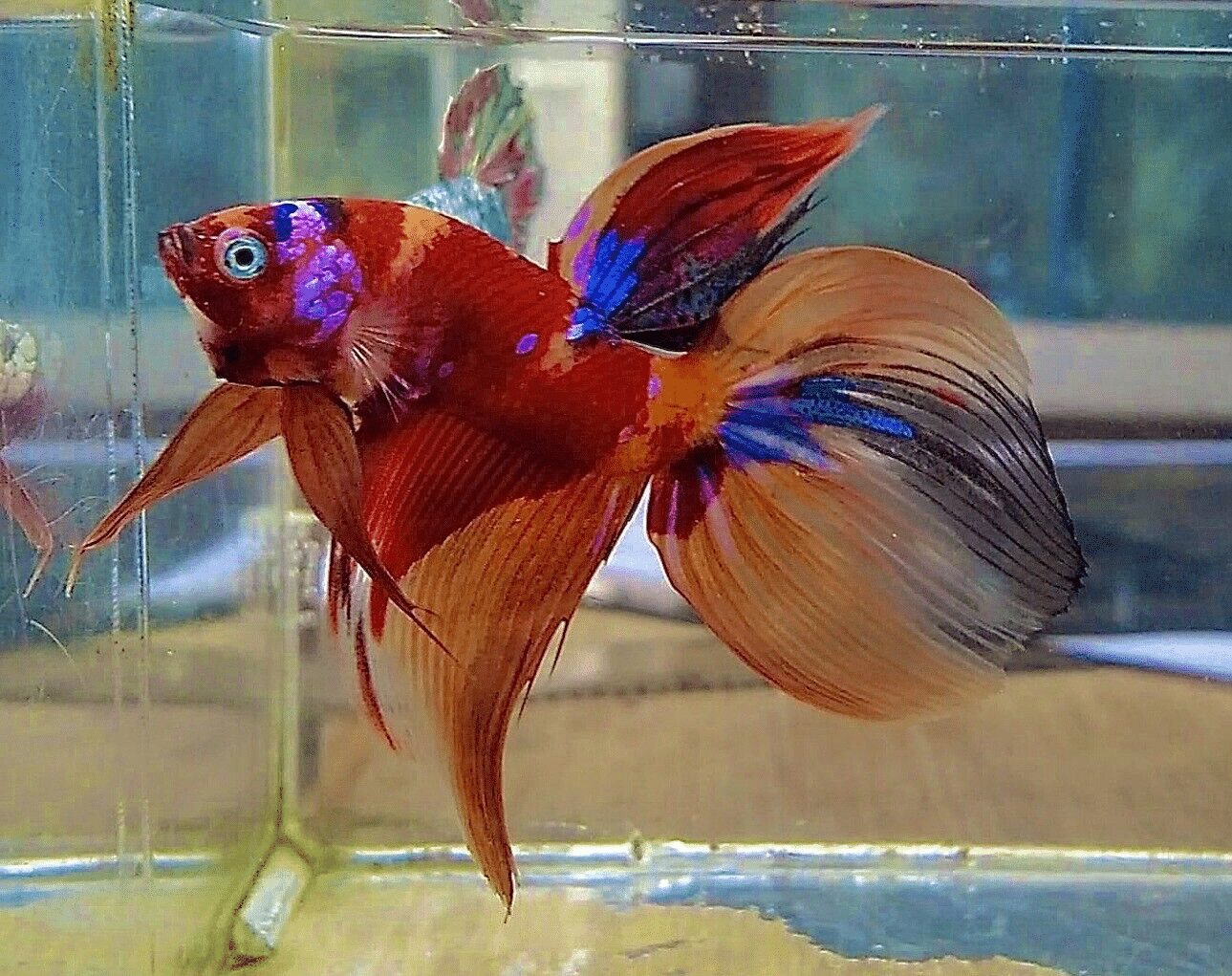
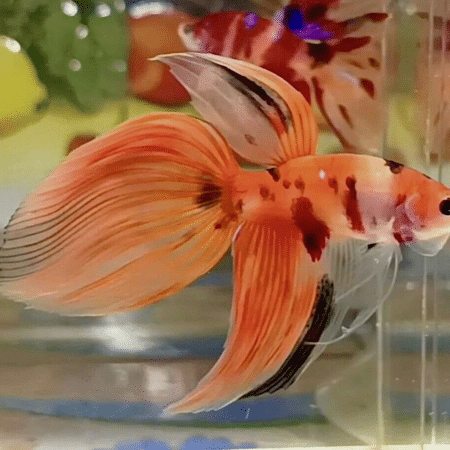
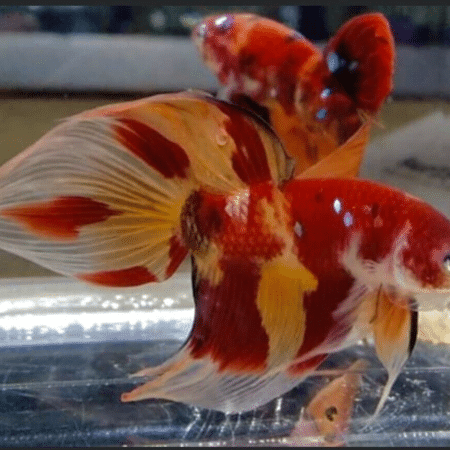
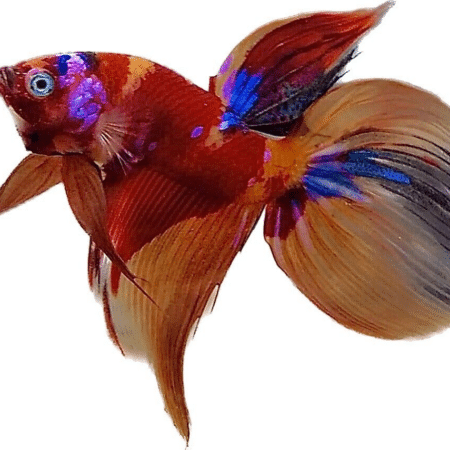
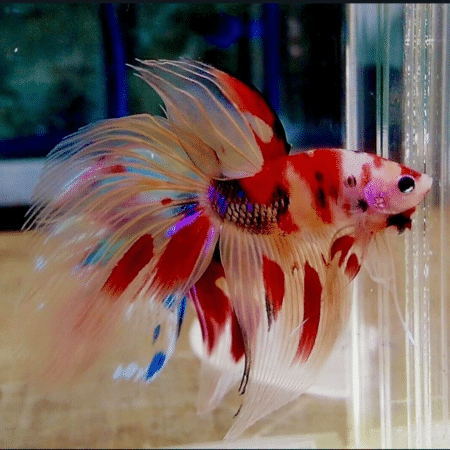
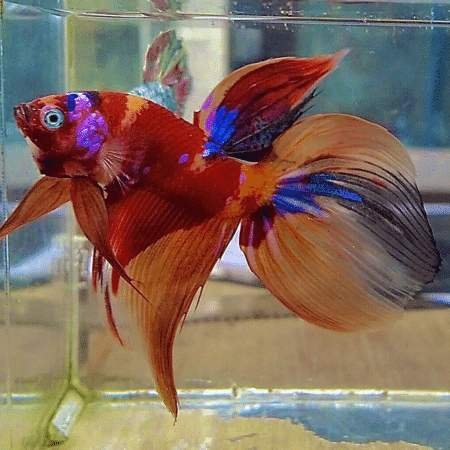
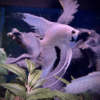
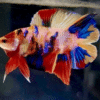








Emily Carter (verified owner) –
I recently brought home a Veiltail Nemo Betta and I couldn’t be happier! As a caring fish parent, I always prioritize the health and happiness of my aquatic friends. This Betta Splendens arrived in perfect condition after a quick shipping process, and it took to its new environment like a champ. Within just a week, it was exploring every nook and cranny of the tank, showcasing its vibrant colors and elegant fins.
What I love most about this specific variety is its playful personality and the way it interacts with me when I approach the tank. Compared to other bettas I’ve kept, this one seems much more vibrant and curious, making it a joy to watch. I also appreciate that it’s a hearty fish, which means it adjusts well to varying water conditions.
For anyone looking to introduce a betta to their aquarium, I highly recommend the Veiltail Nemo. It’s especially perfect for beginners or those wanting a lively addition to their tropical fish collection. Just be sure to provide plenty of space and hiding spots, as they thrive in environments where they can feel secure. I’ll definitely be purchasing another one soon!